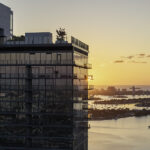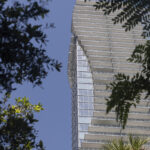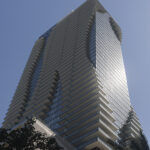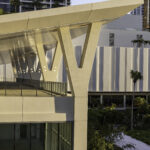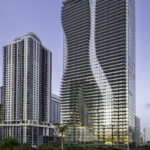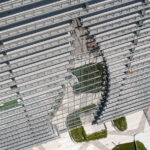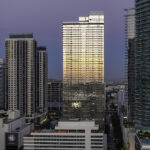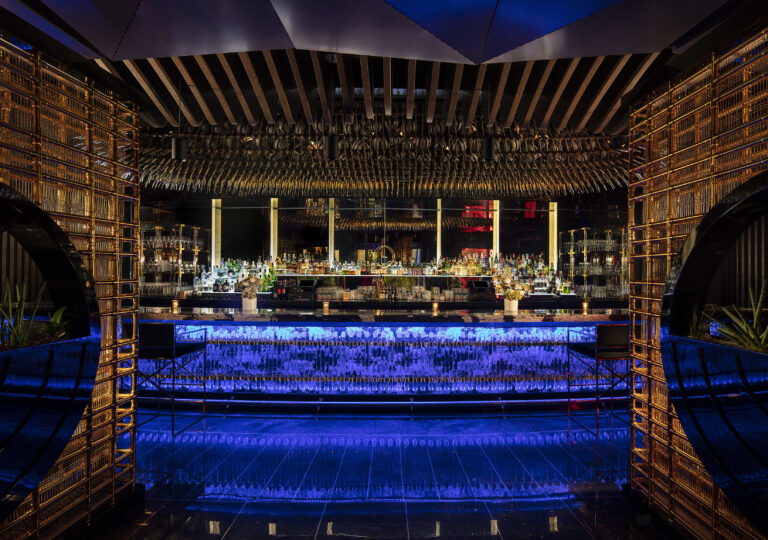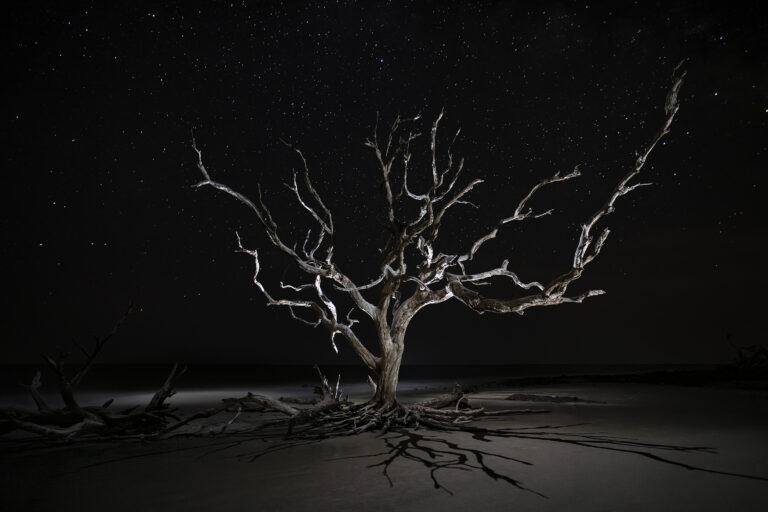The Art of Light: Behind the Lens at World Tower Block F
By Mike Butler | Architectural Photographer
Let me take you inside what it really takes to photograph a building like World Tower Complex in Miami’s tightly packed downtown — part of the grand Miami World Center transformation, where millions in urban revitalization are reshaping the skyline
A Bigger Picture in a Tight Space
Set amid the densest patch of towers, this mixed-use Block F shoot wasn’t just another exterior job. We’re talking weeks of choreography—careful planning to get that singular sliver of light just right. We delayed the shoot for nearly two months, so we would capture the building when the sun moved farthest north, so light would stream down NE 8th St, at just the right angle. Luckily, that precise alignment played out on the perfect day. A few weeks later? Poof—gone. That’s precision in action.
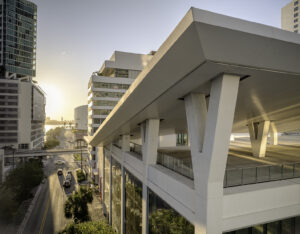
Patience Is Part of the Gear
I spent multiple days scouting, then returned with an assistant to catch subtler shifts in light or angle. One shot I loved from the daytime felt like it needed that dusk glow — so I returned to reshoot just that angle. That kind of commitment to catching light as it slides, dances, and lands just so is what makes all the difference.
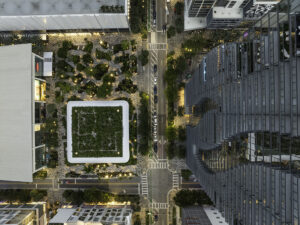
Drone & Ground Harmony
Combining ground-based angles with aerial perspectives added layers—but also layers of complexity. Tight regulations, no-fly zones, and dense pedestrian traffic meant every drone move had to be meticulously orchestrated. My assistant kept watch, I piloted the drone, and we stayed clear of cars and crowds. One false move could’ve ended in a collision—so flying safe became as essential as chasing the shot.
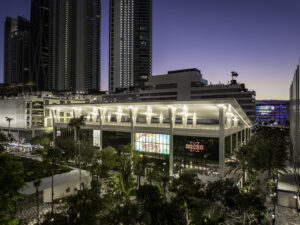
When Obvious Isn’t Enough
Everyone sees the same angles—walk up, shoot, done. That’s not my style. I want the view no one’s seen before, even on a building that’s already part of everyone’s skyline. I may not always pull it off, but that’s the ambition driving how I work. And sure, there were more shots we could’ve gotten — from the nearby train station, neighboring rooftops, or overlooked corners. But part of crafting a meaningful shoot is knowing when to pull back and let the best ones shine.
One of the biggest challenges I faced was capturing the building’s curves. They revealed themselves only from very specific angles within a narrow range, which limited how I could approach the façade. And with neighboring towers crowding the site, the perfect angle was sometimes impossible to achieve — blocked entirely by surrounding structures.
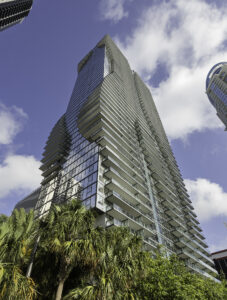
Final Take
World Tower Block F sits at the heart of a transformative downtown — with a biophilic Apple Store nestled in between towering giants, its green butterfly garden rooftop offering a modern contrast to the sleek geometry of Miami Worldcenter. And behind every crisp frame lies hours of shadow-watching, location-flexing, and timing calculations—plus a bit of that photographer’s wild hope to catch something truly unseen.
Checklist: Shooting Your Own Exterior Architecture
Plan for More Than One Day
Exteriors evolve with light — don’t expect to capture it all in one session. Treat day one as scouting, then return when conditions are right.
Watch the Light Closely
Track how shadows move across the building. Sometimes the best shot only happens when the sun is at its farthest north or south — which might mean waiting weeks or months.
Use Drones Beyond Shooting
Fly the drone to scout new perspectives, revisit missed angles, or preview how light might play on façades at different times.
Walk the Entire Block
Explore every possible vantage. The obvious angles are easy — the best ones are often tucked away down an alley or across a busy street.
Run Two Cameras if Needed
Don’t be afraid to set up multiple cameras to capture different sides or time-sensitive light.
Check All Rules & Permissions
FAA drone regulations, local no-fly zones, and permissions from architects or neighboring buildings are non-negotiable. (In Miami, I even had to avoid a “super-secret” building across the street.)
Be Ready to Reshoot
Some images only reveal their potential later. Don’t hesitate to go back — dusk vs. daylight, different car traffic, or subtle weather shifts can elevate an image.
Lorem ipsum dolor sit amet, consectetur adipiscing elit. Ut elit tellus, luctus nec ullamcorper mattis, pulvinar dapibus leo.


